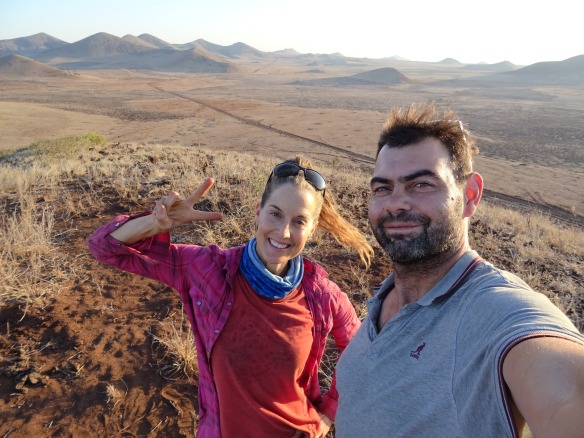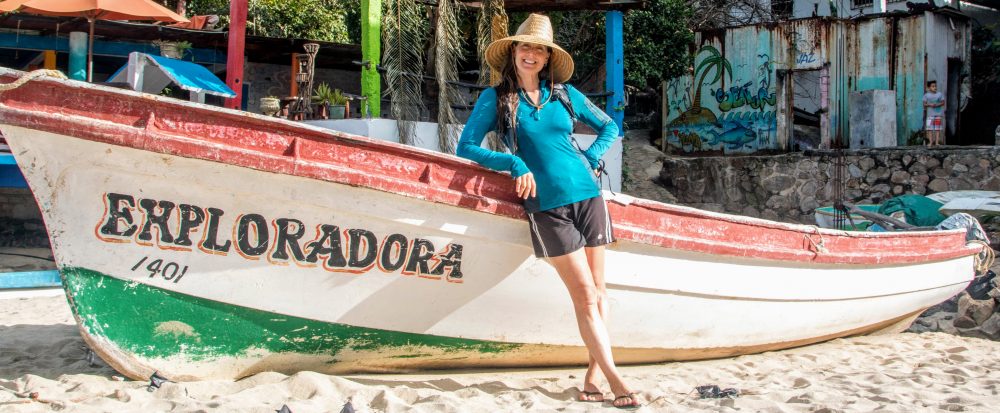
In Hurri Hills. Stunning.
After two weeks in beautiful Uganda (see previous post), Mathieu and I crossed into Kenya!
Click HERE to go directly to the video slideshow or click “Continue reading” to read more.
Kenya, officially the Republic of Kenya, was a former British colony until gaining independence in 1963. The official languages of this large country, about the size of Texas, are Swahili and English but more than 60 indigenous languages are spoken [1]. Fun fact: Barack Obama, who’s father is Kenyan, was the first American President to visit Kenya [2].
And I can see why, it’s a beautiful and interesting country.
Kenya is most known for its wildlife safaris and for Mt Kenya, where you can summit the country’s highest peak at 17,057 ft (5199 m). But these activities were out of our budget, so we explored some of the other amazing places throughout the country.
Our first stop was to the Kakamega Forest Reserve, Kenya’s only tropical rainforest and its last remnant of the ancient Guineo-Congolian rainforest that once spanned the continent [3]. We spent two days here. Mathieu mountain biked, I did yoga and journaled, and we both enjoyed the sounds of monkeys, birds, and insects in the beautiful forest around us.
We then continued north, driving over the steep escarpment of the Rift Valley, a wide fault that runs through Kenya from north to south. The valley floor is dotted with volcanoes, some still active, numerous lakes and the relics of many hominids, ancestors of humans [4]. We camped for a night at Lake Baringo, one of two freshwater lakes in the Rift Valley, arriving just in time to watch the sunset and later, to watch the light of the full moon spread across the lake. We didn’t see hippos or crocodiles as hoped but we saw some beautiful shorebirds.
While at the lake, we met Nathalie and Jean, a French couple who were also overlanding through Africa. They’d already overlanded through the rest of the world (i.e., Asia and USA) on their round-the-world trip and were now driving through Africa all the way back to France. Amazing. We ended up caravaning with them as we all headed north. After a day driving through beautiful landscapes, we stopped for a sundowner. As we enjoyed some chilled wine (thanks Nat & Jean!) and snacks, we watched the locals walk by. We were now in the land of the Maasai, an indigenous ethnic group in Africa of semi-nomadic people [5].
We’d seen some Maasai people in northern Tanzania but we were now fully immersed in their homeland. They are a stately people and very friendly. As they passed on the nearby road, people waved and some came over to shake our hands and tell us “haribo” and “karibu” (hello and welcome). It was wonderful to meet some local people and to get a close look at the jewelry adorning their bodies. Many women wore metal and beaded earrings, bracelets, headbands, and strands of beaded necklaces layered so high you couldn’t see the skin of their necks. The men also wore necklaces and bracelets around their wrists, arms and ankles. They dressed in Shúkàs, a cloth wrapped around the body, typically red but also blue, black and checked [6]. They were beautiful.
We were invited by brothers Victor and Dennis to camp on their property nearby, and the next morning, to meet their families. With the help of the brothers who spoke English, we were able to talk a bit with this gracious Maasai family. It was really a wonderful experience to spend some time with them and to get a glimpse into their lives.
From there, we continued our two-truck caravan and drove through the Mugie Wildlife Conservation Area, a community-run reserve focused on conservation and sustainability. Just from the road, we saw lots of giraffe, zebra and antelope, and later were stopped by a large herd of elephants who crossed in front of us. It really never gets old seeing these magnificent animals. After our wonderful safari, we said goodbye to Nat and Jean; they continued south and we continued north.
In north-central Kenya, we drove through arid rolling hills covered with scrub and dotted with low trees. We were now in the region of the Samburu, an indigenous ethnic group related to but distinct from the Maasai [7]. Unlike the Maasai we encountered, the Samburu men were much more elaborately adorned than the women. We had the opportunity to meet five young Samburu herders when they flagged us down from the side of a small dirt road. They didn’t speak English but thanks to body language, we understood they were asking for a ride to the next village for one of the guys. It was great to “talk” with them and to get the chance to look more closely at their jewelry and various body adornments. They were beautiful.
As we continued further north, the landscape became more arid, more remote and more beautiful. And instead of cows and goats, people had camels, a species much better suited to living in the desert. Like the more traditional livestock, camels are used by the nomadic tribes of northern Kenya for milk, meat, clothing and social status. There’s even an annual race, the Maralal Camel Derby, where local professional camel racers compete for prestige [8]. We missed the race by a few weeks but it would have been interesting to see. After watching a few hundred of these tall, long-legged animals stroll slowly across the road, it may have been entertaining to watch them race. Ha!
After a night bush camping in the desolate desert under a million stars, we came over a small hill and got our first views of Lake Turkana, the world’s largest permanent desert lake and the world’s largest alkaline lake [9]. Called the “Jade Sea”, it was a stunning oasis in the middle of the barren desert. It was darn hot out so we immediately jumped, fully clothed, into the lake to cool off. We discovered later that Nile crocodiles are found in great abundance on the shores of this lake. Hmmm…maybe that’s why the few locals around us weren’t swimming.
We were now in the region of the Turkana, an indigenous ethnic group also related to but distinct from the Maasai [10]. Like the Maasai and the Samburu, they were elaborately adorned with jewelry and colorful clothing. As we drove along the lake, we were stopped by a group of Turkana kids. They gathered at the window and sang to us. I’m sure they hoped for sweets but all we had to offer at that moment were avocados. Ha! We drove past small, oblong, wooden huts covered in cloth in keep the sun, wind, and dust out, then drove through the small village of Loiyangalani, where people looked at us shyly, smiled, and waved back as we waved and said “haribo.” They were beautiful.
That night, we found a bush camp overlooking the lake where we watched the sunset then later searched the dark sky for shooting stars. It was a great spot but we couldn’t escape the wind. It was incessant and rattled our tent all night. And it was darn hot, even at midnight. That’s life in the desert. While it wasn’t the best night of sleep, we woke up to watch the sunrise on the lake and to see…flamingos! They were an unexpected treat.
We then left the lake and continued north, driving through a large expanse of volcanic rock then through deep sandy areas dotted with palm oases. In the small town of Kalacha, we stopped to visit a small, stone church. While we’d seen tons of churches during our trip, few were exceptional. But the inside walls of this one were covered with brightly-colored murals depicting the birth of Christ. It was a lovely little church and the murals were beautiful.
From there, we continued further north to Hurri Hills. We hadn’t read anything about the area but decided to drive to this super remote part of northern Kenya [only about 30mi (45km) from the Ethiopian border] to see, what appeared on Google Maps to be, a bunch of small volcanoes. Adventure!
We passed through the tiny village and just as we started to see the tops of some volcanoes over the next small hill…we were attacked…by a rock.
I saw the rock in the middle of the road but thought I’d clear it. Nope. The sound of hitting the rock was immediately followed by a horrendous noise. Apparently, I hit the top of the rock then, like an iceberg, it flipped over and the larger, buried part was forced loose and the rock tumbled. And during the tumble, the rock somehow made contact with the blades of the radiator fan, leaving pieces scattered on the ground. I felt terrible. I couldn’t believe that 1) I’d hit a rock that broke the fan blades and 2) it’d broken the truck in the middle of fricken nowhere. Crap. And to add insult to injury, I rarely drive! Mathieu drives 99% of the time so of course this happens the tiny 1% of the time when I’m driving. Crap. After helping me feel better about my mistake, Mathieu calmly assessed the situation and figured out that the horrendous noise was the radiator fan stubbs hitting the plastic fan cover. After remounting the cover the noise stopped, and while only stubs of the fan blades remained, the fan still turned. So, we continued the short distance to our intended destination. It was already late afternoon and we were in the middle of nowhere (nowhere with a mechanic or even other vehicles) so why not enjoy the night. And I’m so glad we did.
The area was stunning. We found a bush camp in a grassy field and walked to the top of a nearby hill to look out over this super remote region dotted with small, dormant volcanoes. It was stunning and except for one guy herding his camels in the distance, we had the entire area to ourselves. So despite the attack rock, it was the perfect night in an amazing place to enjoy the most northern point of our African adventure. [We’d worry about getting out of there with a broken radiator fan the next day. Stay tuned…]
I’ll let the pictures and videos illustrate the beauty of the landscapes and people of Kenya.
Enjoy!

Wonderful ! Great pics and videos And a very descriptive narrative of the adventure as it unfolded. Always looking forward to your next post. Enjoy and be safe, DAD
LikeLike
This is a question about your ioverlander comment. Uganda to kenya without a carnet. May I ask in which country your car is registered? We have a german car and no carnet. Would like to cross here or one border down south into kenya. We had problems before because the officers say that all germans have a carnet. One time they wanted to impound our car. Would be nice to know what licence plate / country is your car.thanks a lot
LikeLike